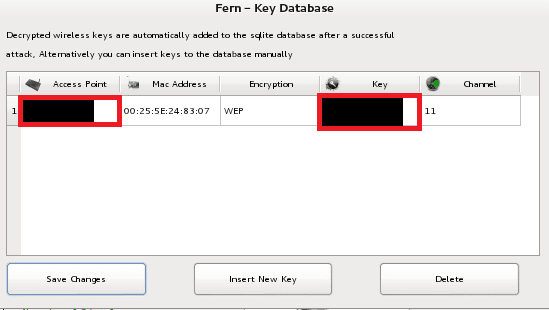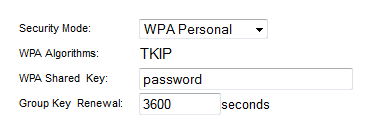Crack WEP using Fern Wifi Cracker Wireless Attack In my previous tutorial I show how to crack WPA password but now let’s downgrade on cracking WEP that is less secure and easier to crack than WPA password, easier than eating popcorn. Here the use of the MAC address is not only limited to the Wireless LAN technology, but is also used for data transmission via cable (LAN). Fern Wifi Cracker. The Fern Wifi Cracker is also a.
The convenience and flexibility of WiFi networks make them a logical choice when providing Internet access for your home or business. There are a few issues that come along with the mobility that a WiFi network furnishes its users. They are:
Reliability

An Internet connection made with an Ethernet cable is more reliable than a connection made through WiFi. If you use WiFi at all, you have probably experienced the frustration of suddenly losing connectivity. This happens much more frequently with WiFi networks than on a cabled network.
Security

Perhaps the most troubling aspect of using WiFi networks it the security risks posed by a WiFi password hack. If an intruder was compromising your cabled network, there would be physical signs of the unauthorized access. If someone were trying to hack your WiFi password, there is a good chance you would never be aware that an attempt was made. An unscrupulous individual who understood how to hack WiFi passwords could be using your network to enact their own Internet access or gain entry into your network and electronic resources.
Protecting Yourself From a WiFi Hack
We believe that the best way to protect yourself against an intruder who wants to hack your WiFi is to know how to hack a WiFi password yourself. We are going to present a method to do just that by using your Mac computer and a freeware application called KisMAC.
We will be giving you a step-by-step overview of the steps required to use this method and will essentially show you how to hack into WiFi. We are not presenting this information with the intention of allowing others to hack into your Wifi. If that was their intention, there are plenty of other sites that will teach them what they want to know. Our aim is to show that it is feasible that your network could be under attack at this moment without any indication that someone is trying to hack your access password.
Fern Wifi Cracker Pro

It’s better to be armed with this knowledge than to pretend there are no potential dangers inherent in having a wireless network. So let’s take a look at how to hack into WiFi using some simple tools.
How to Hack WiFi Passwords
Fern Wifi Cracker Wordlist
There are three popular security protocols that can be used to secure your wireless network. They are WEP, WPA, and WPA2. Wired Equivalent Privacy (WEP) is the weakest of the protocols. WiFi Protected Access (WPA) is stronger, followed by WPA2. All of these methods of securing a wireless network can be subverted using the tools we will describe below.

We again want to emphasize that this information is to inform individuals or network administrators regarding the potential that the security of their wireless network can be compromised. Please don’t take our explanation of how to hack WiFi networks as an invitation to attack nearby targets. To do so is a violation of privacy and can lead to criminal charges.
To break into a secured wireless network you need to know the password. If you don’t have the password, you need to use a method known as a “brute force” attack in order to obtain access to the network. This type of attack is very time-consuming and it is not guaranteed to work.
It preys on the fact that many wireless routers and networks are protected by very weak passwords. In some cases, there is no password or the user simply relies on the default, which can easily be found by knowing the model of the router in question.
Steps to Hack WiFi Passwords
In addition to the aforementioned KisMAC application, you will also use a collection of Linux tools known as Aircrack-ng. You also need a password file that contains the actual password of the network you are attacking. Files containing thousands or millions of the most commonly used passwords are available for download on the Internet.
Hacking a WEP Network

KisMAC is a wireless stumbler and cracker that can perform a number of WiFi related tasks directly from your Mac’s operating system. WEP keys are compromised by a process known as WEP injection where data packets are used to determine the password. Once you have accumulated the necessary amount of data packets, with a minimum being around 200,000 packets, follow this procedure inside of KisMAC:
- Click on Network.
- Select Crack.
- Choose Weak Scheduling Attack.
- Select Against 40-bit.
Fern Wifi Cracker Mac Address Labels
This should be sufficient to crack the less secure networks protected with WEP security.
Hacking a WPA/WPA2 Network
It’s not as easy to hack into a WPA wireless network. In order to crack WPA security, you need to obtain a handshake, which occurs when a computer connects to a wireless router. You also make use of a password file which contains a list of passwords in ASCII format. You then use KisMAC to test the handshake against the password file.
- Start KisMAC and choose the network you are attempting to crack.
- Click Network -> Deauthenticate to force connected devices to reconnect to the network.
- You will soon see devices connecting to the network, meaning you have captured a handshake. The information you need will be stored in the KisMAC dump file.
- Now you use Aircrack-ng to run a dictionary attack. This is done with this command: aircrack-ng -w <path to word lists> -e <SSID of the network to be attacked> <path to dumps>.
- Now you wait. If the password is contained in the list, you will eventually gain access to the network though it can take a considerable amount of time. On the other hand, if your word list did not contain the password, you will not be able to access the network.
Brute force attacks take a lot of time and as you can see, rely on the ability of a hacker to reproduce your password. A longer password will make your network substantially more secure. Using a machine that can generate 2 billion distinct keys per second, an 8 character password can be cracked in about 2.6 days, according to password-depot.de. Contrast this with the 7.5 million years required to crack a 12 character password and you can see the sense in using longer passwords.
With this knowledge in hand, the best way to protect your WiFi from hackers is to use a strong password of at least 9 and preferably 12 characters. It’s not as hard as you might think to come up a phrase that is memorable to you and obscure for others to determine. Strong passwords are your best defense against having your wireless network, or any of your electronic devices or information, compromised by unauthorized users. Get on it!
If you are reading this article on a computer or mobile device, you are most likely connected to the Internet. In the span of a few decades, the Internet has become a virtually indispensable tool in navigating through the modern world. We use it to shop at eCommerce websites, connect with others through social media, and for strictly entertainment purposes. A home with no Internet access is essentially cut off from the many benefits afforded by the connectivity it offers to users.
At one point, the only way to connect your computer to the Internet and achieve high-speed data transfer was with a wired connection to a broadband router. Now we have options, as WiFi offers another method to connect your devices to the Internet. According to parksassociates.com, over 70% of households in the United States that have broadband Internet service obtain that access through a WiFi connection.
There are certainly advantages to employing a WiFi network in your home or business. WiFi allows you to move freely without being concerned about cables or the number of ports on your router. The looming adoption of the Internet of Things and the promise of smart homes and appliances are predicated on the presence of a reliable WiFi network to allow communication between the devices.